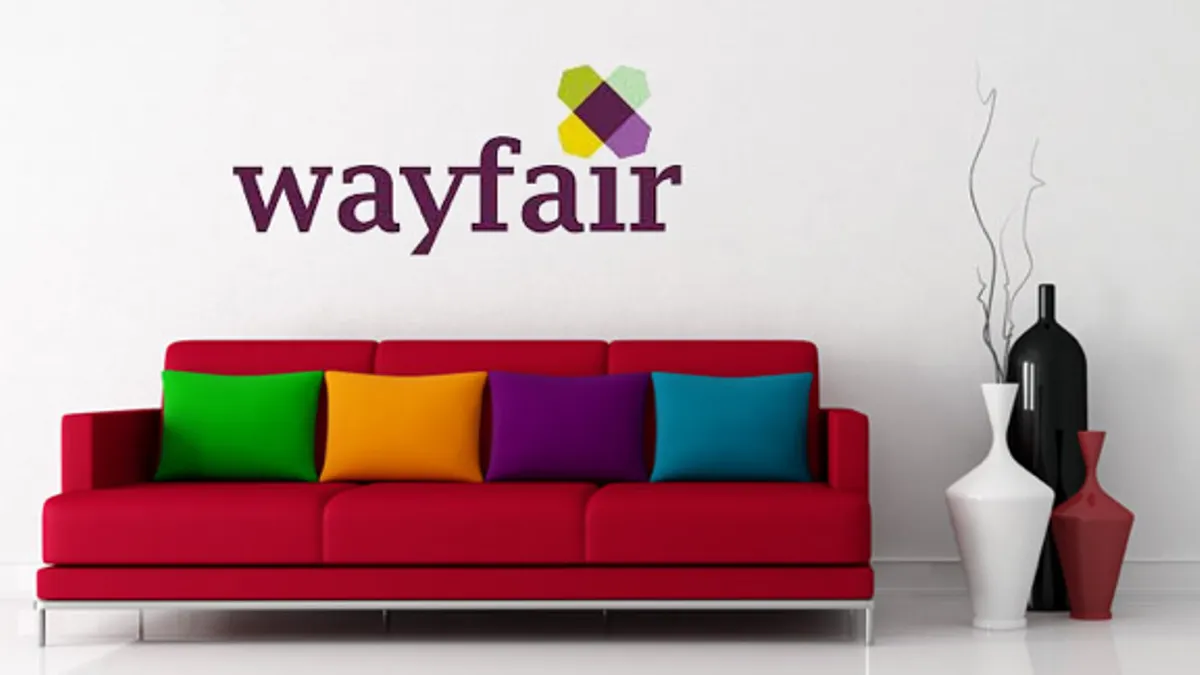Dive Brief:
- The popularity of Wayfair's end-to-end logistics service has bolstered the company's effective shipping capacity and strengthened its relationship with ocean carriers as suppliers inject more volume into the network earlier to avoid congestion and reduce costs, CEO Niraj Shah said on the company's Q3 earnings call.
- The service, CastleGate Forwarding, carried more than 40,000 TEUs in 2020 across its international network, the equivalent of a top 30 U.S. importer by volume, according to an investor presentation.
- "We can take possession of products in Asia, break the shipments in bulk to go to different locations, arrange for transport over the water and to population-adjacent fulfillment centers," Shah said. "We optimize the supply chain for our suppliers who cannot do it on their own."
Dive Insight:
The furniture retailer's forwarding service is a win for the company, its 16,000-plus suppliers and its customers, Shah said.
Wayfair's supplier visibility improves, as CastleGate Forwarding incentivizes suppliers to position products into the company's network earlier. End customers see a reduction in shipping times as products are placed upstream in a more optimal way, according to Wayfair's website. Plus, its suppliers get "ocean container availability at competitive rates," Shah said, something difficult to find on the open market.
"We're leaning in here in a big way," Shah said. "Our effective shipping capacity is growing multiple fold year-over-year as supplier demand for these services continues unabated and our relationship building and large volume with ocean freight carriers is paying off."
Wayfair isn't the only retailer prioritizing its logistics capabilities to better the business. Amazon's "Fulfilled by Amazon" service lets third-party sellers ship through the e-commerce giant's growing logistics network. JD.com is investing in its supply chain services and omnichannel offerings to better position the company for long-term growth. American Eagle is buying Quiet Logistics to give it more control over its supply chain, lowering costs and increasing efficiencies.
Wayfair began building out its logistics network several years ago, which includes its CastleGate fulfillment centers and Wayfair Delivery Network. As of Q4 2020, 90% of its large-parcel orders in the U.S. go through its middle-mile network, and its last-mile delivery operations cover 70% of its U.S. large-parcel deliveries, per the investor presentation.
"They need to partner with us because we have that dense network," Shah said of Wayfair's suppliers, none of which represents more than 2% of the company's revenue.
However, CastleGate is seeing lower inventory levels than it did pre-pandemic. This should improve as suppliers rebuild their inventories in 2022, Shah said.
The difficult supply chain environment has challenged Wayfair in other ways. The company used to list items not in their warehouses or their suppliers' warehouses as out of stock, but it's now selling products it knows are in transit, even if that means showing extended delivery times.
"In the current environment, customers have come to terms with much longer lead times on products, and we need to adjust to that," Shah said.














